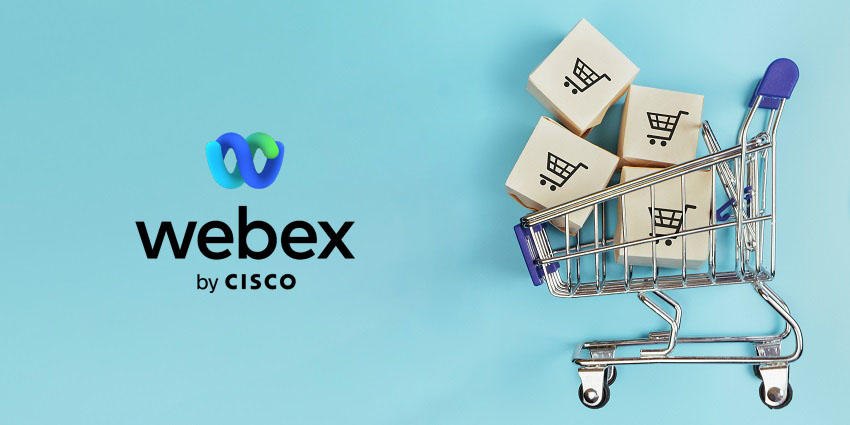The seismic shift in customer expectations has brought about a need for personalized brand interactions across all communication channels, with customers demanding more control over how they buy and receive goods and services.
Good customer service has become a crucial driver for repeat business, with customers willing to pay more for a better experience.
This rise in customer expectations, alongside the emergence of digital-first generations, means that great experiences are crucial for any retailer to attract and retain customers.
A recent eGuide issued by Webex CPaaS Solutions has highlighted the challenges retail outlets face, along with guidance on how communications platform as a service (CPaaS) technology could be the key to differentiation.
1. Tightening Purse Strings
Challenging economic environments inevitably cause consumers to consider their finances. With recessions looming and the cost of living rising, many people are seeing their disposable income shrink and are looking to be savvier with their spending.
In fact, research from Webex CPaaS Solutions found that 92 percent of consumers now consider cost the most important factor when deciding where to spend.
While retailers are not in control of customers’ spending power, they can make changes to become more competitive.
Retailers that have not yet embraced digital transformation will likely have a sprawling infrastructure of systems that are not connected. This creates a huge opportunity to bring together siloed workflows and save money through operational efficiency, which can in turn be passed on to the customer.
2. Disjointed CX
The disparate systems mentioned above are not just harmful from a cost perspective; they can make it incredibly difficult to deliver a succinct service to customers.
This is particularly evident if a customer starts a query via a chat interface, for example, but then switches over to a phone call.
The lack of connection between channels makes it difficult for agents to obtain the full details of a customer’s query, meaning the customer can end up having to repeat themselves. This inevitably leads to frustration and can seriously damage the business’s reputation.
CPaaS can address this challenge by bringing together multiple channels, breaking down siloes, and giving agents the knowledge they need to deliver great customer service.
3. App Overload
Digital transformation comes hand in hand with the coming of age of digital-first consumers, as Gen Z become bigger spenders.
Many retailers have looked to address this trend by launching smartphone applications. However, this might not be the best approach, with Gen Z smartphones already bursting with retail apps.
Research from Webex CPaaS Solutions found that 77 percent of younger millennials are happy interacting with businesses via social media, compared to just 38 percent of baby boomers.
With that in mind, it is essential for businesses to meet consumers where they are. A CPaaS platform lets retailers do just that. Webex Connect, for example, can bring together more than 16 digital channels, including Facebook Messenger, Google Business Messages, Instagram, and WhatsApp.
The benefits here are two-fold: firstly, the customer is satisfied because interacting with the business is easy; and secondly, the retailer does not need to rip and replace their existing systems to provide a better service.
The Journey to Success
Webex CPaaS Solutions has mapped out a path retailers can take to succeed, driven by conversational commerce. It breaks this journey into four key stages:
- Awareness
- Consideration
- Purchase
- Retention and Advocacy
The first stage is designed to catch prospective customers as they’re researching the options available to them. This will involve online research in most cases, so it’s crucial to give prospects a communication channel. Coupling good SEO practices with two-way comms directly where the customer is researching, in Google Search or Maps, for example, will improve customer engagement.
In stage two, the customer will have decided what they need to purchase and will be weighing the options provided by different companies. Here, businesses should make sure that customers have the ability to engage with them.
It’s important to provide communication channels even as the customer is buying a product or service. At the checkout stage, for example, an integration with backend systems will let buyers customise their purchase through things like delivery slot selection.
Post-purchase, it’s all about customer retention. To make customers loyal and likely to return, retailers must impress them with solid customer service that doesn’t vanish after buying.
Backing AI-powered services and chatbots into their applications to automate further communication with customers is recommended. This could include personalised messages around events like birthdays, or recommendations for future purchases based on their history.
CPaaS tools can be baked in through these four stages to ensure that customers have the means to communicate with a business wherever they are in their buying journey.
Converting Challenges to Opportunity
Retailers are facing many challenges, but, with the right technology, these can be spun into opportunities to attract and retain customers.
The best customer experiences are simple, consistent, fast, and convenient. They should meet customers where they are with automated, always-on digital channels and personalized service interactions that are always one step ahead. This is what CPaaS technology can deliver when done right.







